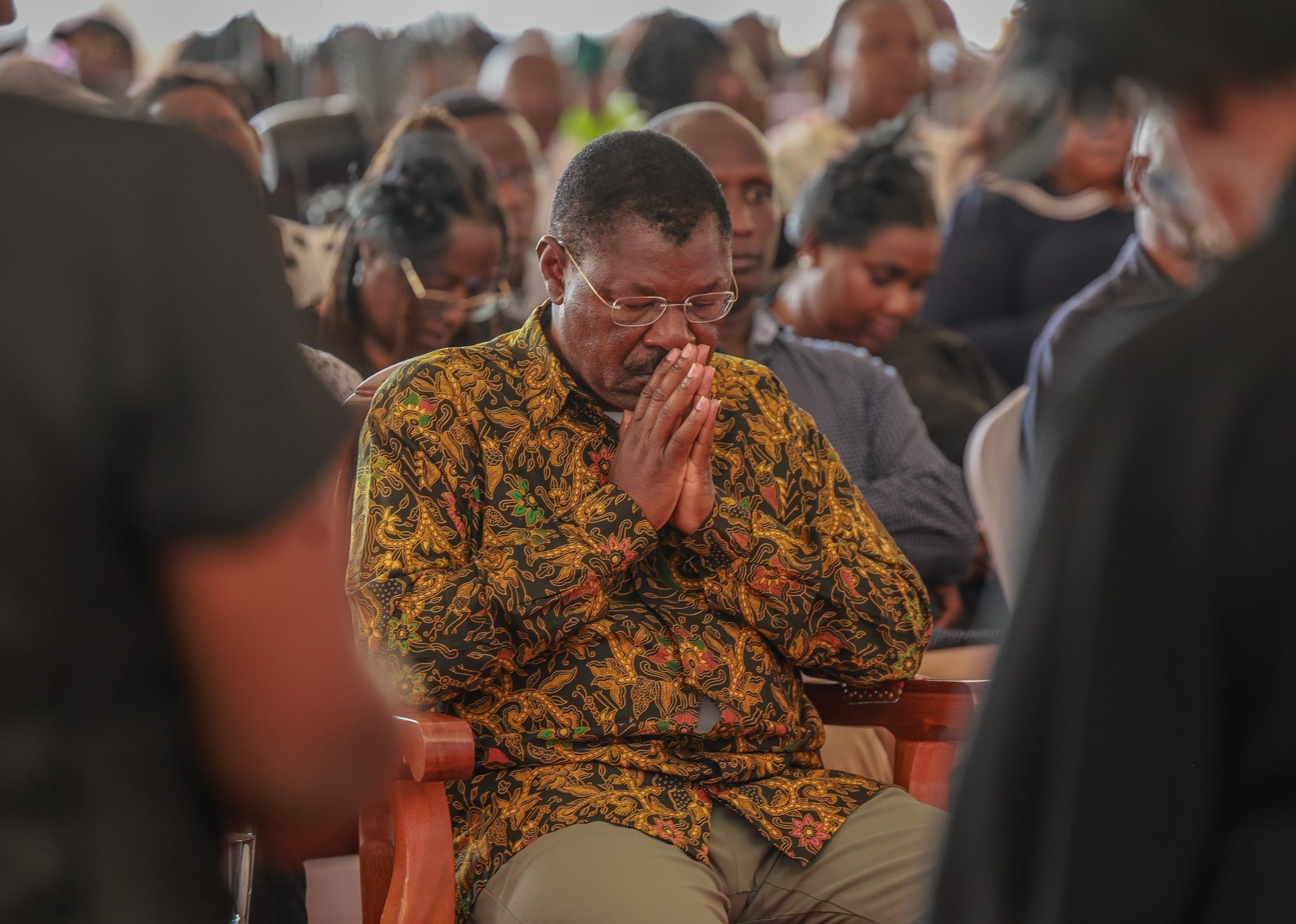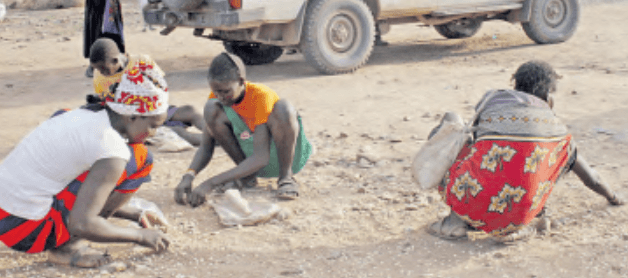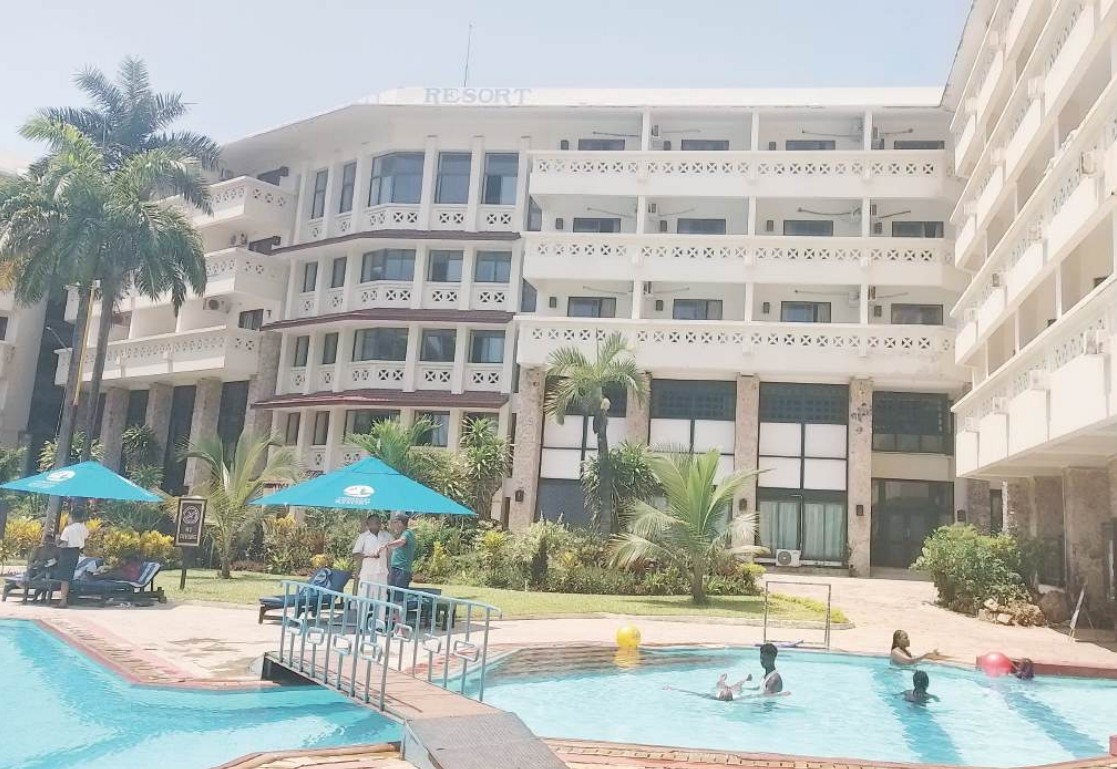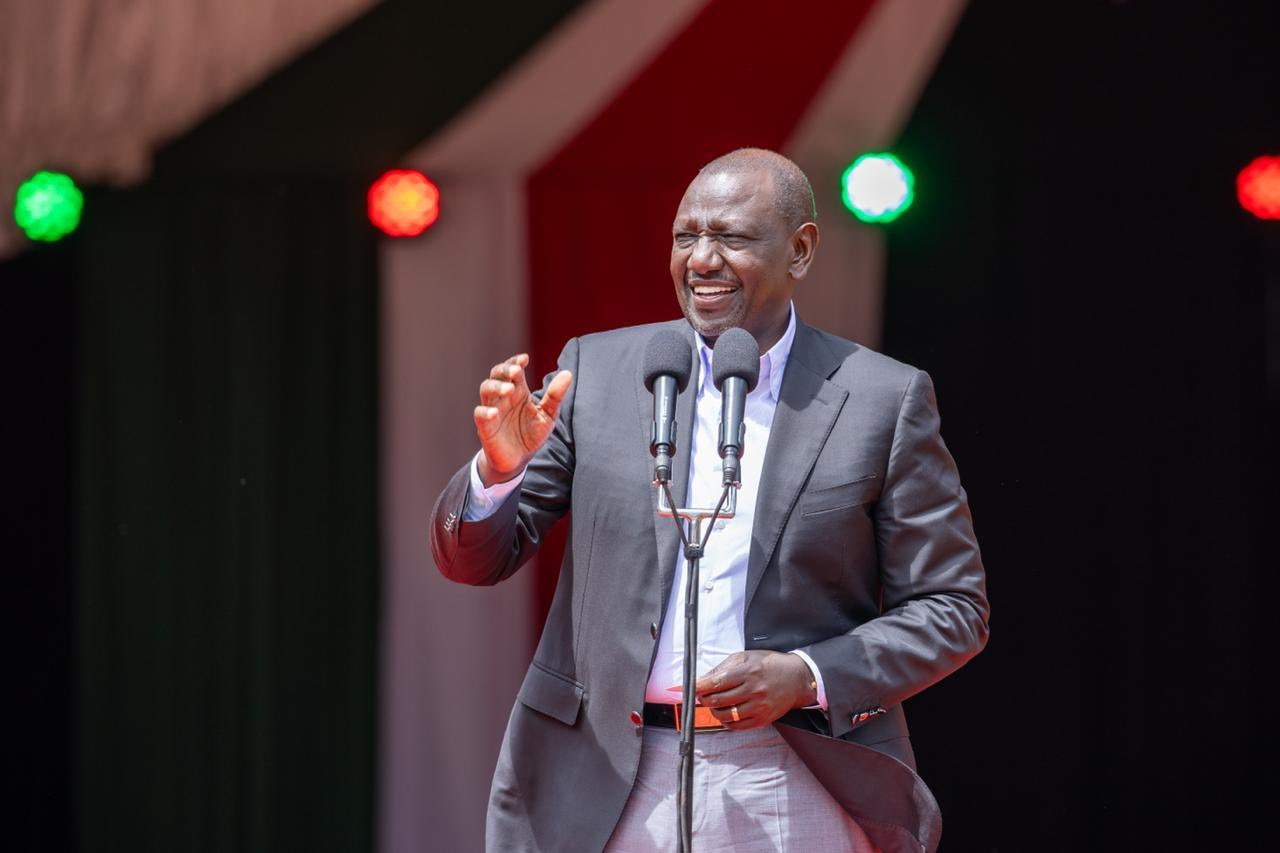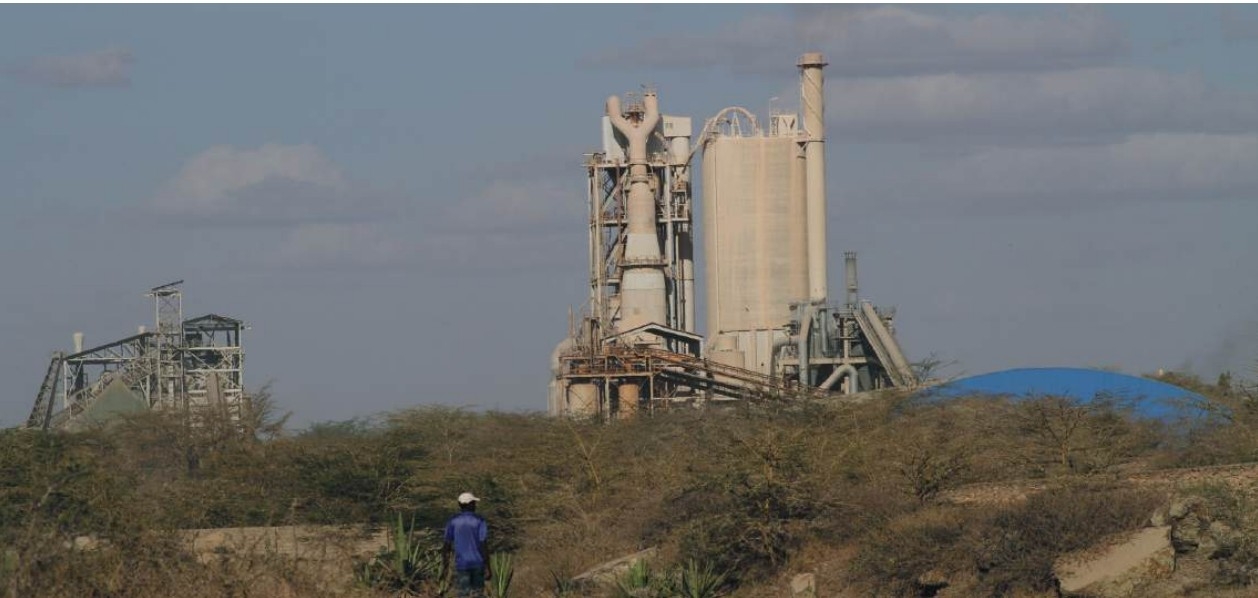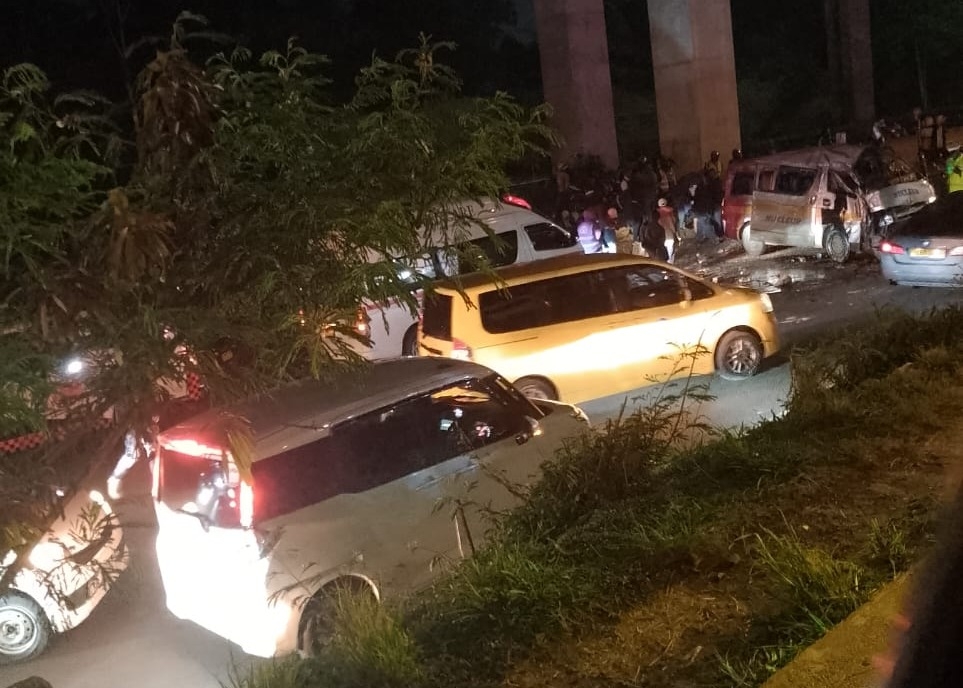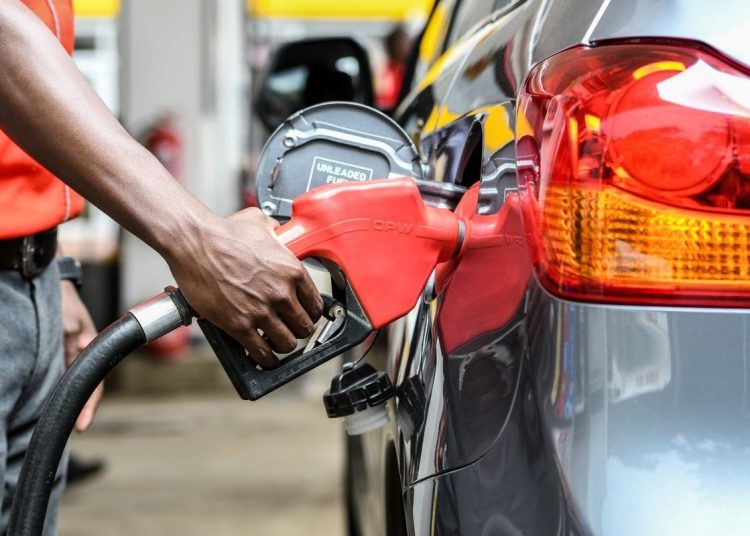
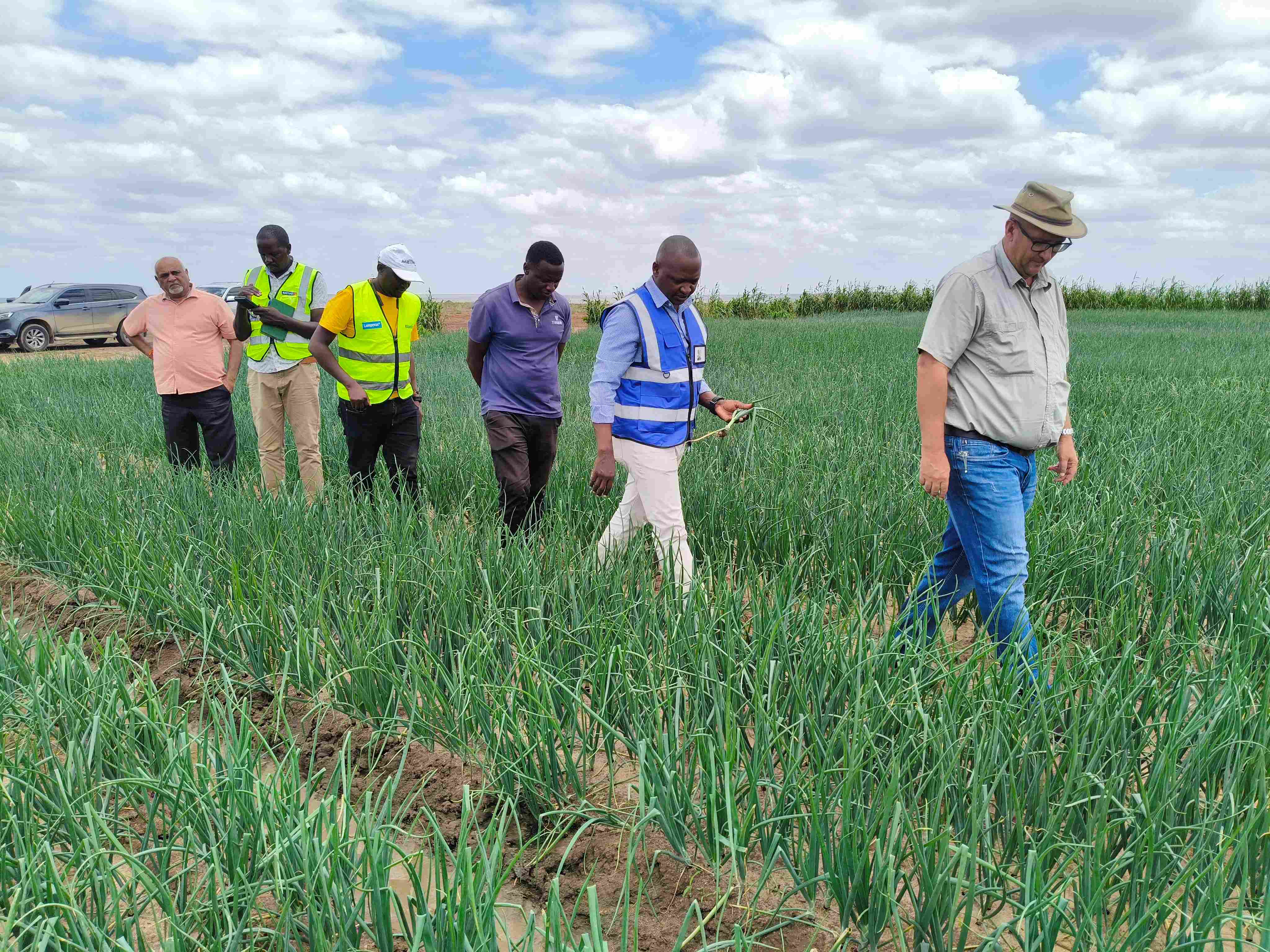 Nyumba Agri general manager Jan Coertze [R] and Irrigation
secretary Joel Tanui [2nd R] at the onion farm at the Galana Kulalu irrigation
scheme on Friday / BRIAN OTIENO
Nyumba Agri general manager Jan Coertze [R] and Irrigation
secretary Joel Tanui [2nd R] at the onion farm at the Galana Kulalu irrigation
scheme on Friday / BRIAN OTIENO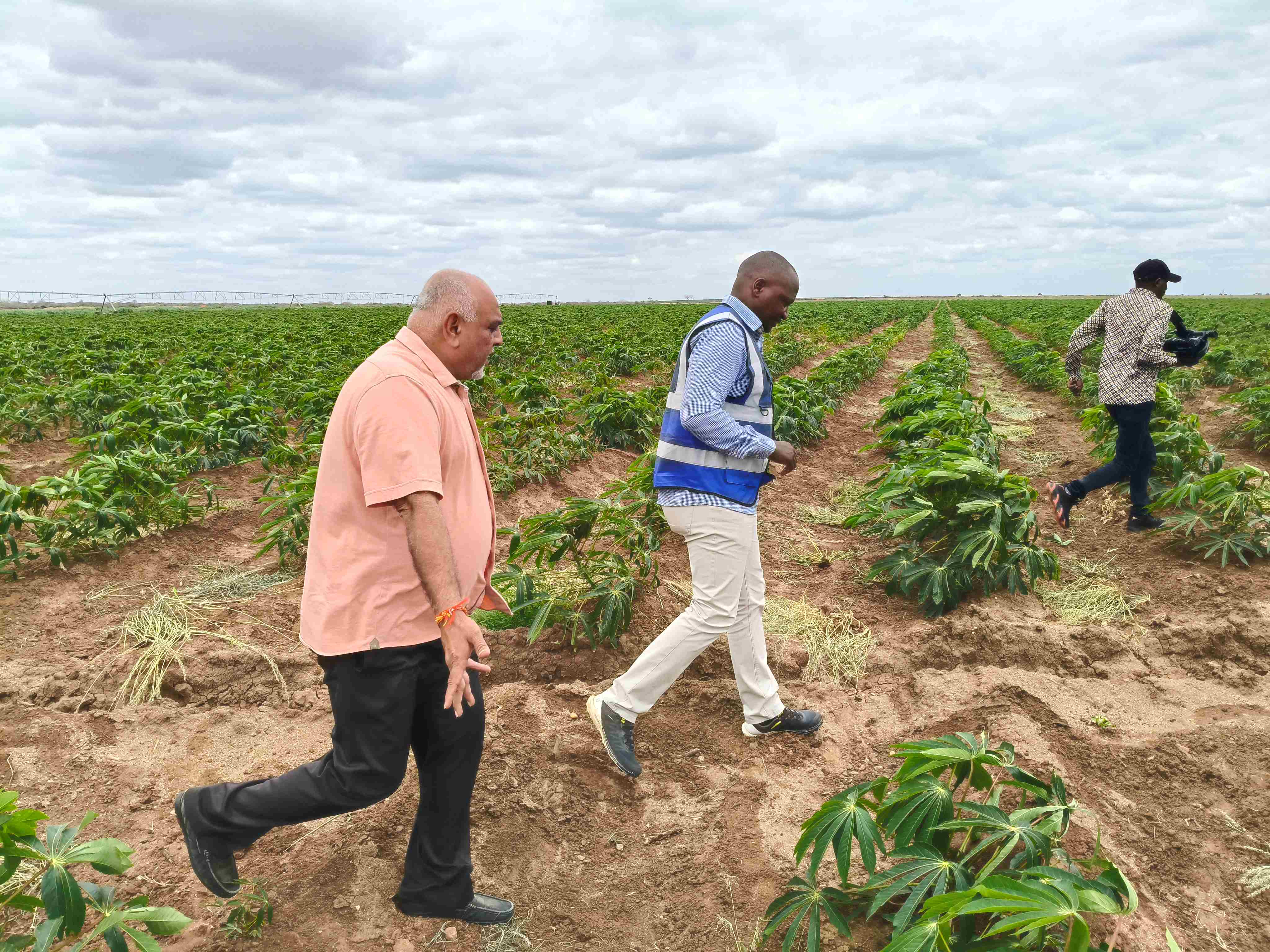 Nyumba Foundation’s Kishor Patel and Irrigation
secretary Joel Tanui at the cassava farm at Galana Kulalu irrigation scheme on
Friday / BRIAN OTIENO
Nyumba Foundation’s Kishor Patel and Irrigation
secretary Joel Tanui at the cassava farm at Galana Kulalu irrigation scheme on
Friday / BRIAN OTIENO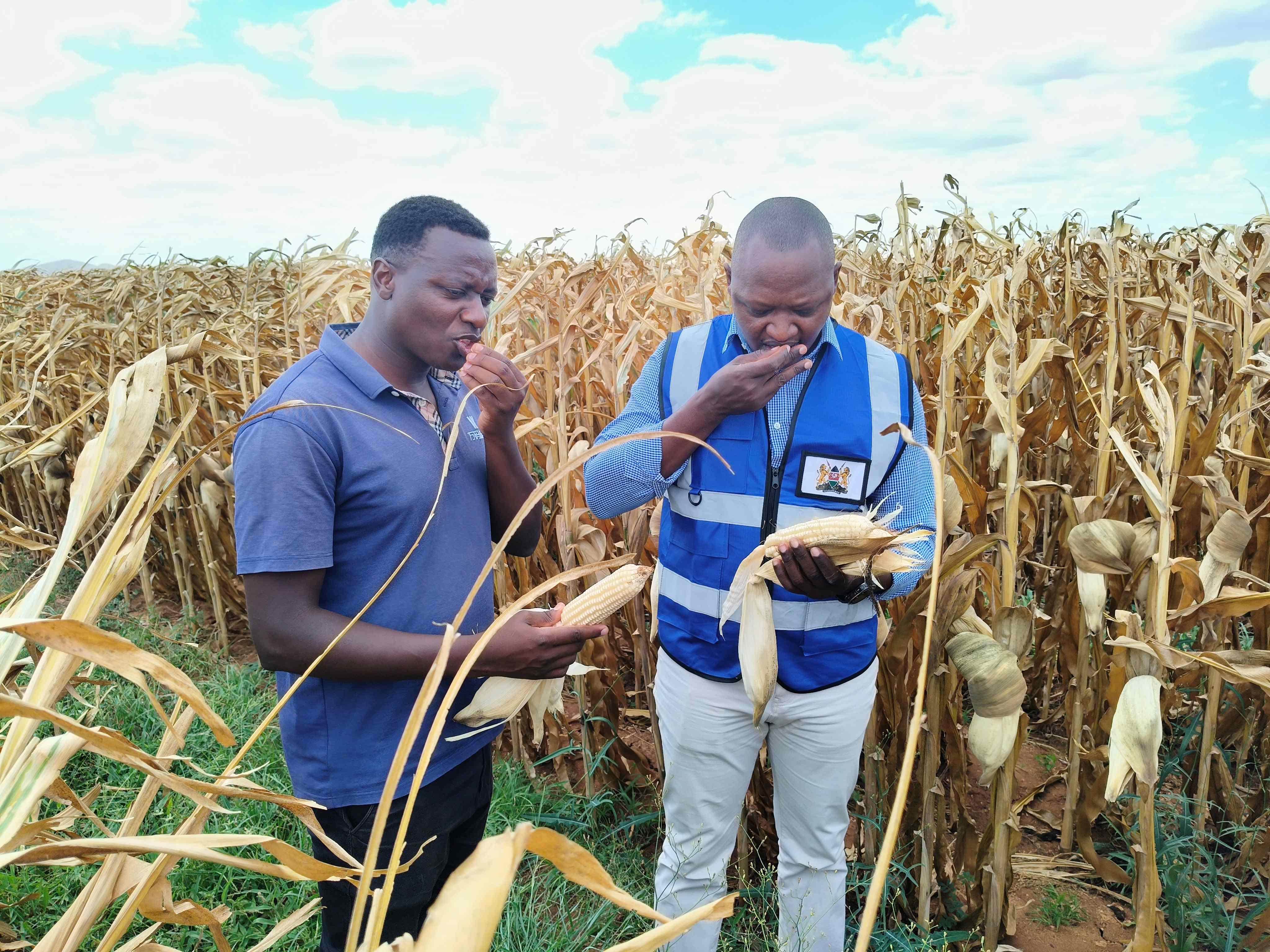 Isaac Mbugua and Irrigation secretary Joel Tanui at
the Galana Kulalu irrigation scheme on Friday / BRIAN OTIENO
Isaac Mbugua and Irrigation secretary Joel Tanui at
the Galana Kulalu irrigation scheme on Friday / BRIAN OTIENOPreparations are underway for the first proper harvest of maize from a 1,500-acre piece of irrigated land by Selu Africa Limited at the Galana Kulalu food security project this week.
Selu Africa Limited is a private firm that is
commercializing 20,000 acres in the Galana Kulalu project under the Public
Private Partnership deal with the government.
Selu Africa Limited CEO Nicholas Ambanya said the maize
on the first 1,500 acres of irrigated land was planted in June.
“We will scale up to 3,200 acres by the end of the
year and then mid next year we will be at 5,400 acres. We will progress in that
manner until we get to 20,000 acres of land,” Ambanya said.
The CEO said they have begun with maize but will
look into other food value chains including groundnuts, sunflower, ndengu,
among others to fully utilize the potential of the Galana Kulalu scheme.
Irrigation secretary Joel Tanui said apart from
Selu Africa Ltd, Nyumba Foundation is also working on the Galana Kulalu scheme.
Nyumba Foundation are working on 51,000 acres, and
are on the development phase, doing irrigation infrastructure and trialing
crops like maize, onions and cassava.
“We have seen that they have developed 3,000 acres
currently under maize, cassava and onions,” Tanui said.
Selu have been allocated 20,000 acres initially
and on the first phase are doing 10,000 acres, of which 1,500 acres of maize is
ready for harvesting.
“In the next one week, Selu will be able to kick
of harvesting of maize in the first two pivots. In the first harvest, we can
easily achieve 4,000 metric tonnes which will get into local milling and into
our local shops, so that Kenyans can have access to affordable maize flour in
our supermarkets and retail shops,” Tanui said.
Nyumba Foundation’s Kishor Patel said they have 23
pivots installed in the entire farm but only nine are currently under
irrigation.
In February or March, the whole 23 pivots will be
under irrigation.
“We are planning to plant cassava, onions and
maize for now,” Patel said.
Currently, some 500 acres are under cassava, another
200 acres are under onions, and another 600 acres under maize.
The plan, according to Patel, is to eventually
have 5,000 acres under cassava, 10,000 acres under maize and 15,000 under
onions.
Patel said they have a big challenge with wild
animals, especially elephants, who invade the farms and destroy the crops.
Power is also another challenge because there is
no electricity yet, so they are forced to operate machines on diesel
generators, which is costly.
“We sometimes also have contaminated water in
River Sabaki because of chemicals thrown in to the river upstream,” Patel said.
The road infrastructure is poor because it is
still being developed.
Patel said Kenya is blessed with good arable land
and favourable climate which when fully utilized can help feed the entire
nation and have surplus food for export.
He called on Kenyans to do agriculture on a
serious note.
“Government should give priority to agriculture,”
he said.
Selu said they eventually expect to employ at
least 2,000 workers by the time they fully irrigate the 20,000 acres allocated
to it.
He said skills and knowledge transfer is one of
the targets the company has to meet during the project’s lifetime.
“We have to educate and train the local communities
through direct training. We will also be working with TVETs and other training
centres to transfer knowledge and skills in modern agriculture to the local communities,”
Ambanya said.
He said government has been very supportive of the
project.
The State department for irrigation, Tanui said,
has prioritized irrigation development across the country to bridge the food
deficit.
“We have a clear plan as a government through the
National Irrigation Sector Investment Plan on what we need to do in the next 10
years to ensure that there will be zero food imports in the country,” Tabui
said.
Under the National Irrigation Sector Investment
Plan, there are two pathways to bridge food security.
These include opening up the Arid and Semi-Arid
Land areas, which hold 80-90 per cent of the potential arable land in the
country, and corporate agribusiness, which is where the Public-Private
Partnerships come into play.
“We are having a one government approach under the
land commercialization initiative to bring on board all idle land within the
country into agricultural production,” Tanui said.
The government has mapped large scale community
lands, which were traditionally being held as ranches, and other parcels being
held by government institutions with no substantive production activities on
them.
The government now has a targeted program under
the Public Private Partnerships, where investors like Selu can now lease the
large scale lands for production purposes.
He said Selu will scale up the model next year to
cover the entire 10,000 acres and eventually get to the entire 20,000 acres in
subsequent years.
“In the next three years when the dam will be
ready, we expect to have the entire 200,000 acres in this region under irrigation
and this will substantially fully bridge the maize import in this country,” the
irrigation secretary said.
The Galana Kulalu model is a multi-agency approach
where different government institutions are supporting the project including
the agriculture ministry, ADC, KWS, Rerec, Kerra, among others.
More than 1,600 residents from Tana River and
Kilifi counties, where the Galana Kulalu project expands, have benefitted from
jobs created.
Selu Africa Limited and Nyumba Foundation have at
least 800 workers each.
“We call upon communities who are still holding
communal land to engage with us so we can have large scale investors take up
those parcels and open up production and subsequently food security,” Tanui
said.
He noted that the government anticipates
industries in the Galana Kulalu farm where value addition and food processing
will be taking place.
He said although wild animals like elephants
continue to be a threat to food production, Kenya Wildlife Service is working
hard to drive away the wild animals to avoid losses for the private investors.
INSTANT ANALYSIS:
This will be the first harvest proper, although there have been two previous harvest which was on trial basis. Some 1,200 tonnes of maize was harvested in the trial phase in late 2023. The government plans to produce food on 200,000 acres initially before scaling up the entire Galana Kulalu scheme to a million acres under food production.



